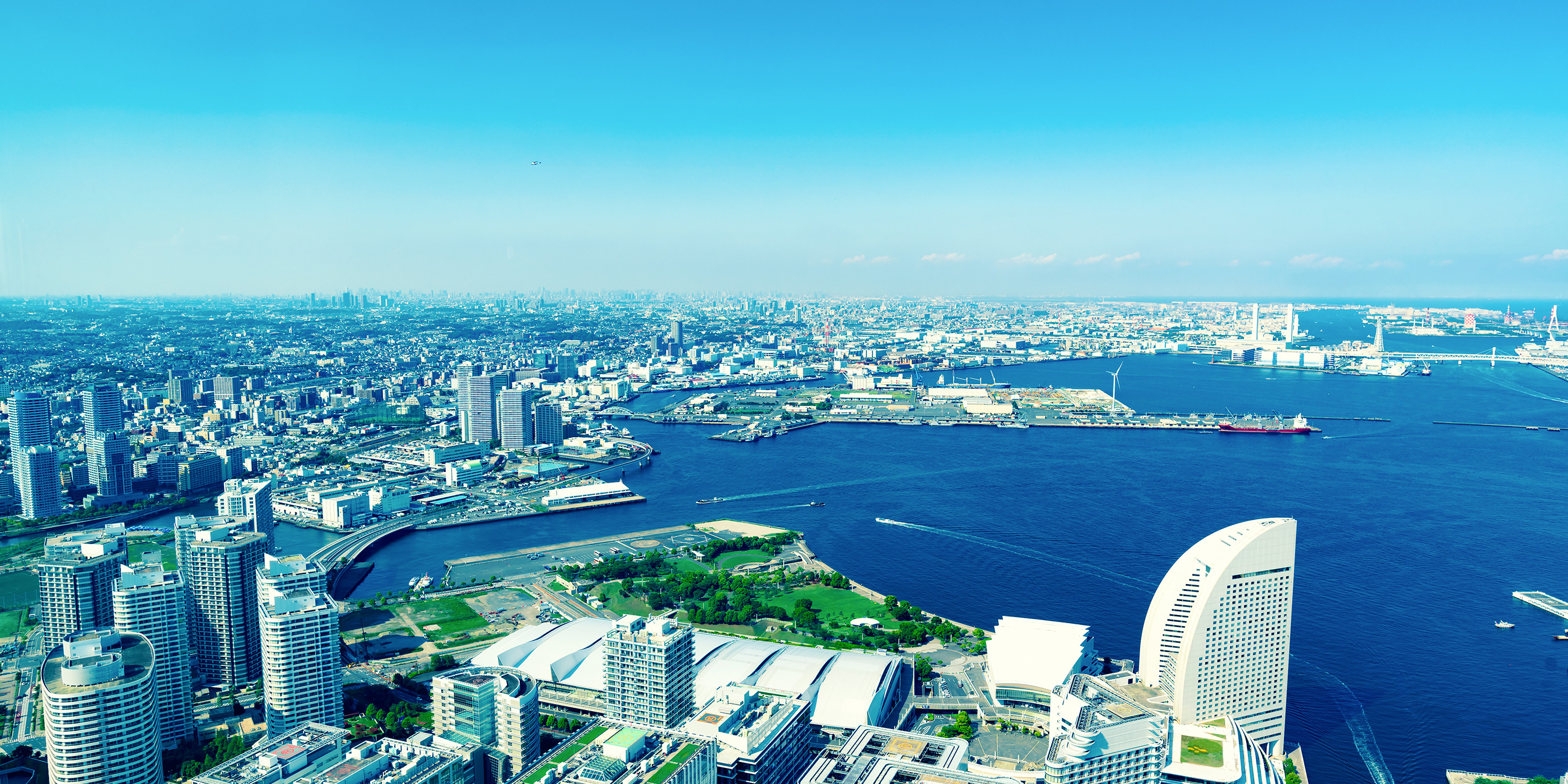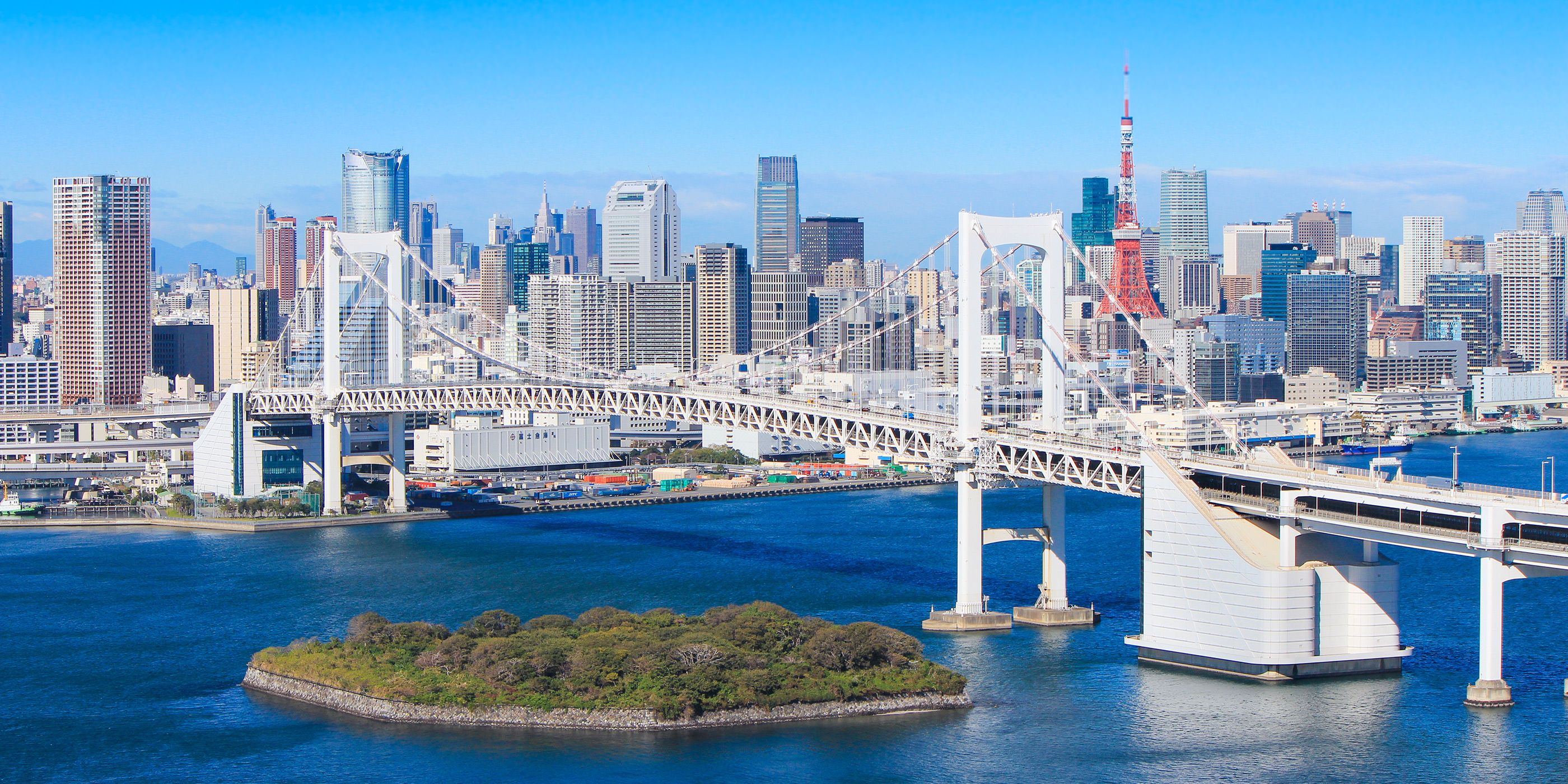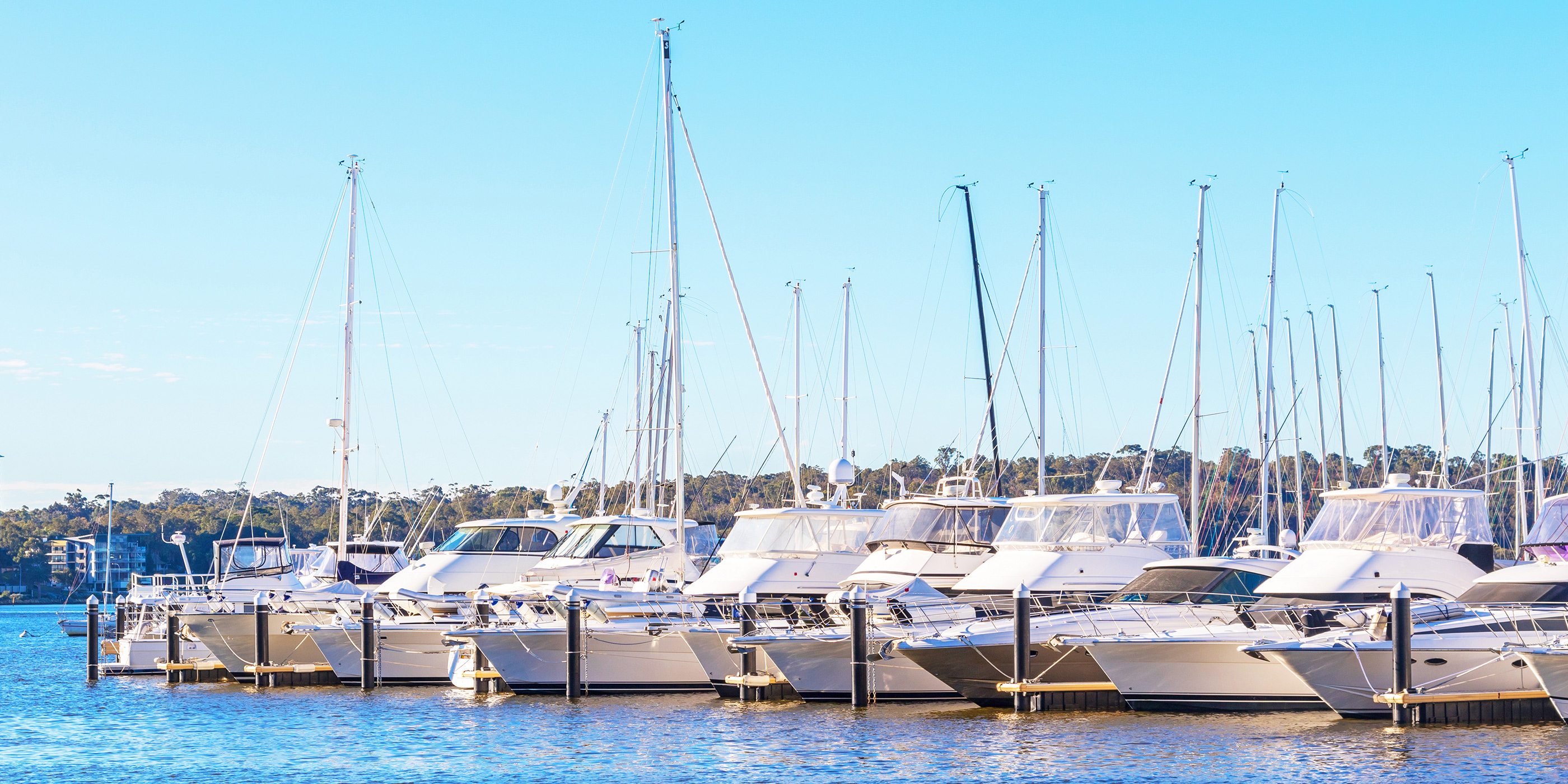Up north the Sumida river course
Sample courses
*Courses may vary depending on vessel and height of the tide.
Departing from Kachidoki Pier
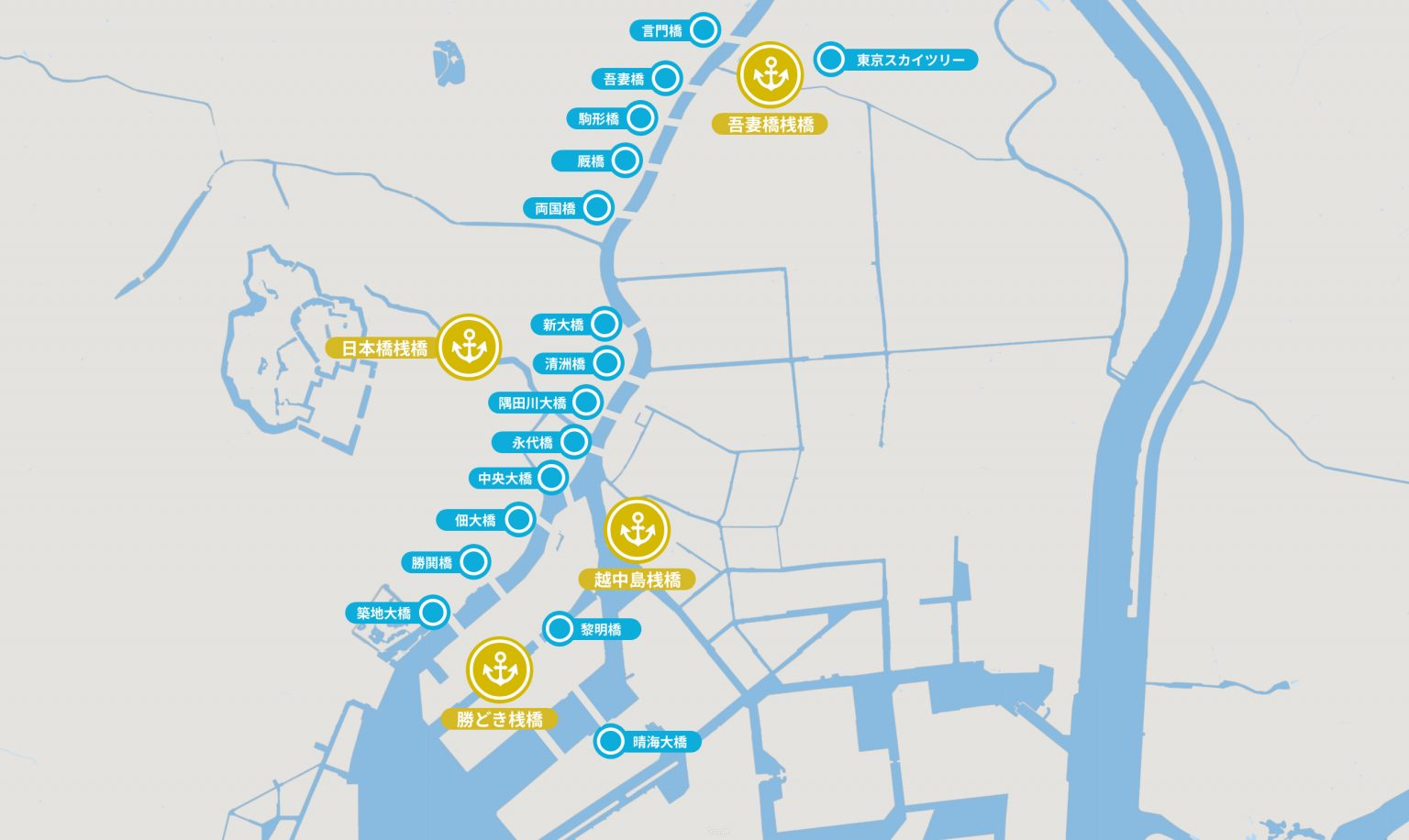
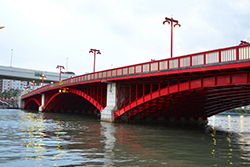
Azumabashi
Originally known as Higashibashi (“East Bridge”) because of its location to the east of Edo, this bridge later was officially named Azumabashi. It’s a sturdy bridge that was undamaged when most of the bridges on the Sumidagawa River were completely washed away by flooding.
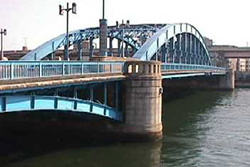
Komagatabashi
This bridge was constructed as part of recovery plans following the 1923 Great Kanto Earthquake. It is said to have been named after the Komagatado hall built to enshrine the Kannon image with a human body and horse’s head belonging to Sensoji Temple.
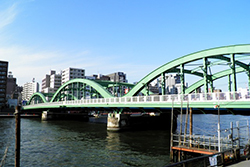
Umayabashi
A stable for livestock such as horses and cattle is called an umaya in Japanese. This bridge was named for the stable for pack horses of the rice granary, which was located to the west of the bridge.
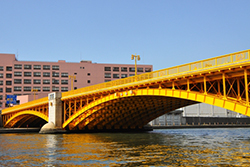
Kuramaebashi
This bridge was named for the rice granary of the Edo shogunate. The bridge’s yellow color, meant to evoke rice hulls, is particularly brilliant under clear skies.
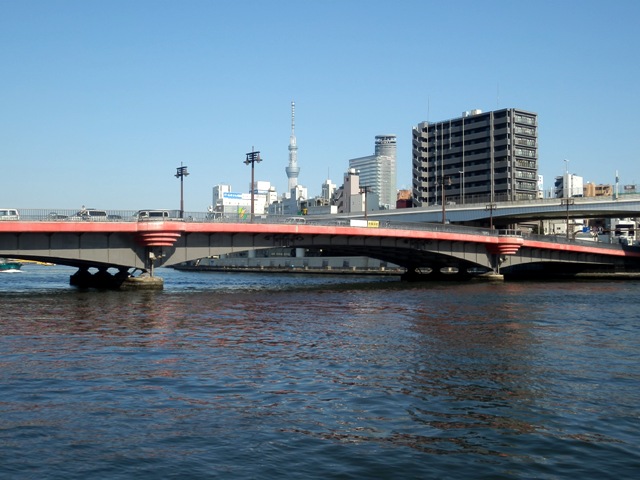
Ryogokubashi
This bridge includes within its structure the Ryogoku Junction of the Shuto Expressway. Its name (“Two Provinces Bridge”) comes from the fact that it was built on what had been the border between the provinces of Musashi and Shimousa before the boundaries were revised in 1686.
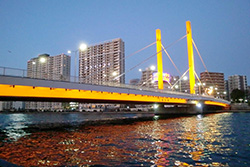
Shin-Ohashi
This historic bridge was the third to span the Sumidagawa River. It survived the Great Kanto Earthquake and served as an evacuation route that saved many lives.
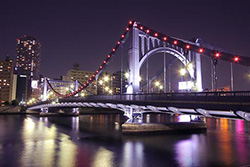
Kiyosubashi
The bridge was installed as an earthquake reconstruction project after the Great Kanto Earthquake. It was designed in the form of a suspension bridge as a counterpart to the arch-shaped Eitaibashi Bridge.
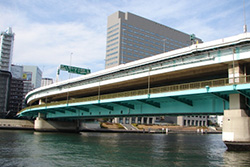
Sumidagawa Ohashi
Built during construction of the Shuto Expressway’s Fukagawa Route (Rte. 9), this is the only double-decker bridge on the Sumidagawa River.
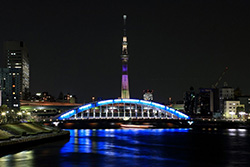
Eitaibashi
This bridge, the fourth to span the Sumidagawa River, was built in 1698 to mark the 50th birthday of Tokugawa Tsunayoshi. It’s a popular sightseeing spot with a view of Sky Tree.
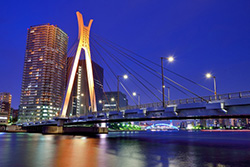
Chuo Ohashi
This bridge, symbolic of Chuo Ward, was built during the peak years of Japan’s economic bubble of the 1980s. It’s a stylish bridge designed by a French engineering firm.
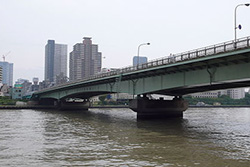
Tsukuda Ohashi
This bridge connecting Tsukuda with Shintomicho. It has a steep grade that makes it a tough stretch for runners in the Tokyo Marathon.
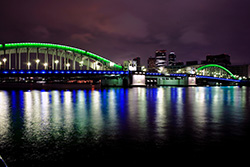
Kachidokibashi
This drawbridge that opens up from its center has been designated an important cultural property by the Japanese government. It was designed to enable the passage of 3,000-ton ships.

